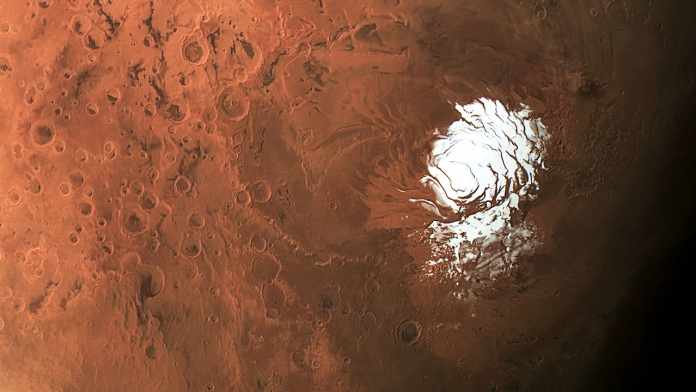
As many as three buried lakes on Mars exist on the South Pole of the planet, scientists confirm the same. Moreover, now scientists are also looking at a fourth lake that exists in the same area. Earlier in 2018, a group of scientists had already given hints about the fourth one. Now, confirmation for the same is on the way. Now, as you may already know, liquid water is one of the essential parts of Biology. It is inevitable for the survival of living beings, and this what catches the interest of scientists. The researchers trying to find possibilities of life elsewhere in the Solar System find this resource exciting.
Despite discovering buried lakes on Mars, the water from these is known to be too salty. Therefore, it can be a challenge when it comes to the survival of any microorganisms. According to the history books on space research, centuries back, lakes and rivers existed on Mars. However, the planet has lost out on a considerable part of its atmosphere. Hence, the primary concern presently is that water does not remain in liquid form for a long time.
Table of Contents
buried lakes on Mars were existent years back as well
According to the analysis of Dr. Roberto Orosei, co-author from the National Institute of Astrophysics, Bologna, Italy, referring to the sub-surface lakes is essential. These are the evidence that supports the existence of water bodies on Mars years back. Dr. Orosei says that there was once a possibility of survival on Mars. However, the planet underwent a massive climatic catastrophe. As a result, Mars turned from a relatively warm planet to a freezing one that cannot support life. Although the level of warmth on the planet is not precise at that time, one thing that is clear now is that Mars is presently a frozen waste.
The latest discovery on Mars is possible with radar instrument information from the ESA (European Space Agency). The organization’s aircraft was orbiting Planet Mars since December 2003 and is known as the Marsis radar. In 2018, scientists found a 20km vast subsurface lake buried 1.5km below the surface of the planet. On top of it is a layer of dust and ice. However, this whole observation was based on 29 reports from the radar from 2012 to 2015. Presently, the team of scientists has become more significant, and they are studying as many as 134 radar reports. These are a part of an exclusive collection of evidence dating from 2010 to 2019.
The salinity level of Martian lakes is still unknown.
According to Elina Pettinelli of the Italian Roma Tre University, the big lake has several smaller ones. However, due to certain discrepancies and limitations in technology, there is no clarity regarding any interconnection. The research team further chose to use a technique that generally helps to derive reports during radar investigations. Such procedures are done on the sub-glacial water bodies in Canada, Antarctica, and Greenland. The same technique is now helpful in finding out information from Marsis.
Scientists and experts suggest that the lakes are sub-glacial, where the heat is not enough to melt the ice. As a result, the concentration of salt here is much more. Besides, it is a type of chemical salt and not the ones we use at home for cooking. This type of salt helps to create heat, and therefore decrease the coldness in the water. Moreover, according to the latest studies, water that contains calcium perchlorate and magnesium salts remain liquid even at -123C. There are several hypersaline lakes on the Earth as well. The salt concentration in these is over 40%, similar to the saline lakes on Mars. The only difference is that there is yet no clarity regarding the lakes’ salinity level on Mars.







